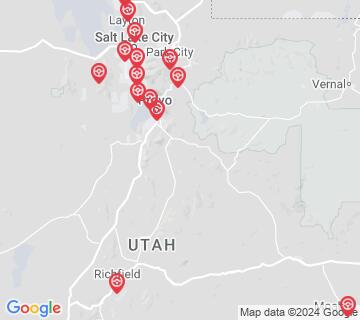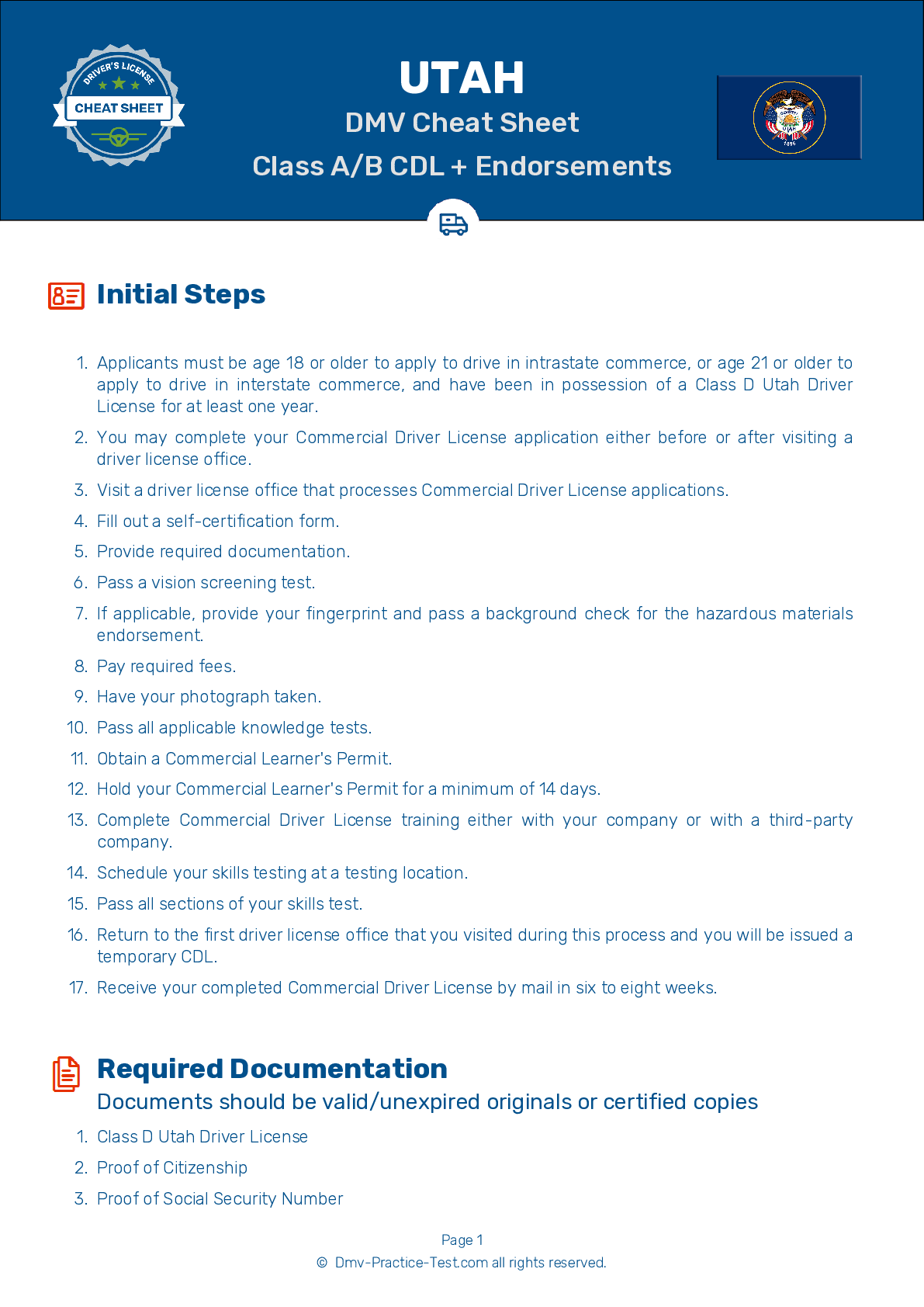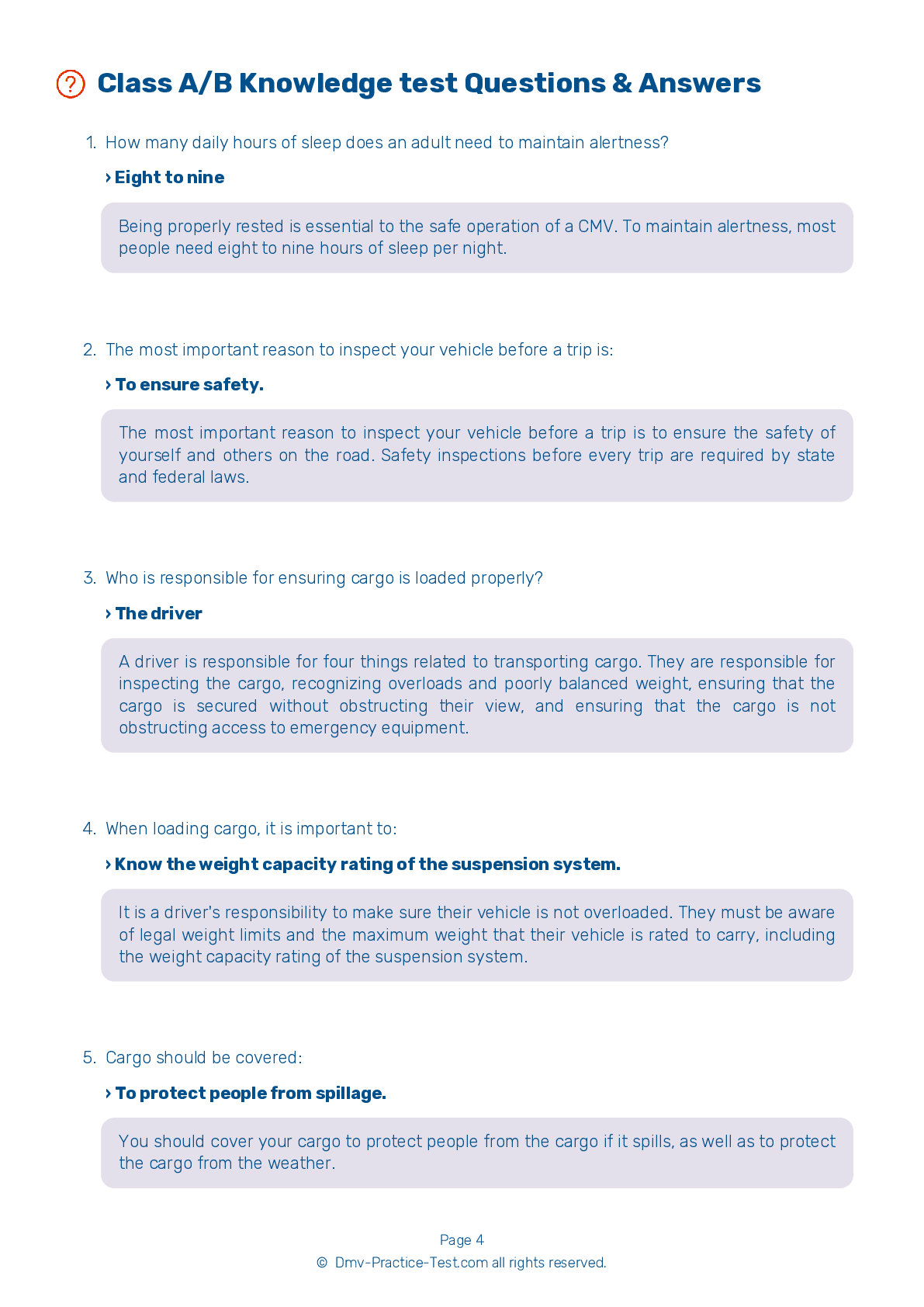Air Brakes #1
Air Brakes Endorsement Test | Utah 2025 #1 Page 2 of 4
Train for FREE online with our Utah CDL air brake test. The official exam test consists of several obligatory parts, with all of them checking your knowledge of different blocks of road rules. If you need to obtain a UT Class A/Class B driver license in 2025, practice as much as possible. Free sample tests published on our website will help you check and improve your knowledge and boost your grades. Please bear in mind that the requirements for CDL may vary from state to state.
25
20
20
7 . During a walk-around inspection, ensure there are no cracks on the brake drums that are more than ____ of the width of the friction area.
One tenth
Before beginning a trip, it is important to check the brake drums during your walk-around inspection. It is unsafe to drive if any brake drum has a crack more than one half of the width of the friction area.
8 . If using air tanks with manually operated drains, how often should you drain the tanks?
Once every 3,000 miles
To prevent the build up of oil and water in a vehicle's air tanks, manually operated air tank drains should be used at the end of each day of driving.
9 . Why do you need to drain air tanks regularly?
To remove bad air from the tanks
Compressed air in an air brake system usually contains a certain amount of water and compressor oil. The water and oil can damage the brakes if left to accumulate in the system. Tanks must be drained regularly to remove this build-up.
10 . Manual air tank drains should be:
Compressed air in an air brake system usually contains a certain amount of water and compressor oil. The water and oil can damage the brakes if left to accumulate in the system. Manually operated air tank drains must be opened daily to remove this build-up.
11 . In a dual air brake system, air pressure should build from 85 to 100 psi within ____ seconds.
When inspecting a vehicle with a dual air brake system, you should wait for air pressure to build from 85 to 100 psi in both the primary and secondary systems. This should take about 45 seconds.
12 . ABS brakes:
The purpose of an Anti-Lock Braking System (ABS) is to prevent a vehicle's wheels from locking up when the driver brakes hard on a slippery surface.
Search the best driving school in your neighbourhood
2025 Utah | Frequently Asked Questions
To acquire a CDL Hazmat endorsement in Utah, you must first have a valid Utah CDL. Then, pass the Hazardous Materials Endorsement Knowledge Test, submit to a federal background check and fingerprinting by the Transportation Security Administration (TSA). Finally, you must pay the required endorsement fee. It's recommended to study the Utah CDL Handbook beforehand.
To obtain a CDL Hazmat license, you must have a valid Commercial Driver's License (CDL). You should be at least 21 years old, have a clean driving record, and pass a physical examination. Additionally, you must pass the Hazardous Materials Endorsement Knowledge Test and a TSA background check. It's also important to be proficient in English for reading and speaking.
When applying for a CDL Hazmat endorsement in Utah, you'll need to provide your current CDL, proof of U.S. citizenship or legal presence (like a passport or birth certificate), social security card, and proof of Utah residency. You'll also need to complete the HAZMAT endorsement application and pass the TSA background check.
Yes, there is a dedicated written test for the CDL Hazmat endorsement. It's known as the Hazardous Materials Endorsement Knowledge Test. This test assesses your understanding of the rules and regulations related to transporting hazardous materials. It's recommended to study the relevant sections in your state's CDL handbook before taking the test.
The written test for the CDL Hazmat endorsement covers a variety of topics including: understanding and identifying different types of hazardous materials, rules for safe loading and unloading, proper use of placards and labels, emergency response procedures, and specific regulations regarding the transportation of hazardous materials. It's crucial to study these areas thoroughly.
Yes, there are extra charges associated with acquiring a CDL Hazmat endorsement. In Utah, the endorsement itself costs $9.00. However, you'll also need to pay for a TSA background check, which costs $86.50. Please note these fees are subject to change and it's always best to check the latest fee structure with the Utah Driver License Division.
Yes, a background check and security clearance are required for a CDL Hazmat endorsement. The Transportation Security Administration (TSA) conducts this check, which includes fingerprinting and a review of your criminal history. If you pass the background check, TSA provides a security threat assessment to your state's licensing agency.
Yes, obtaining a CDL Hazmat endorsement requires specialized training and passing a written test. The training covers handling hazardous materials, safety procedures, and emergency protocols. After the training, you must pass the Hazmat endorsement test to demonstrate your understanding of these areas. You also need to pass a TSA background check.
No, it's illegal to transport hazardous materials without a valid Commercial Driver's License (CDL) with a Hazmat endorsement. This endorsement ensures the driver is properly trained and knowledgeable about handling and transporting hazardous materials safely. Driving without the necessary endorsement can result in hefty fines and penalties.
Yes, you can add the CDL Hazmat endorsement to your current CDL license. You don't need to apply for a new CDL. However, you'll have to pass a written test specific to hazardous materials and undergo a TSA background check. Once these are successfully completed, the endorsement will be added to your existing CDL.




